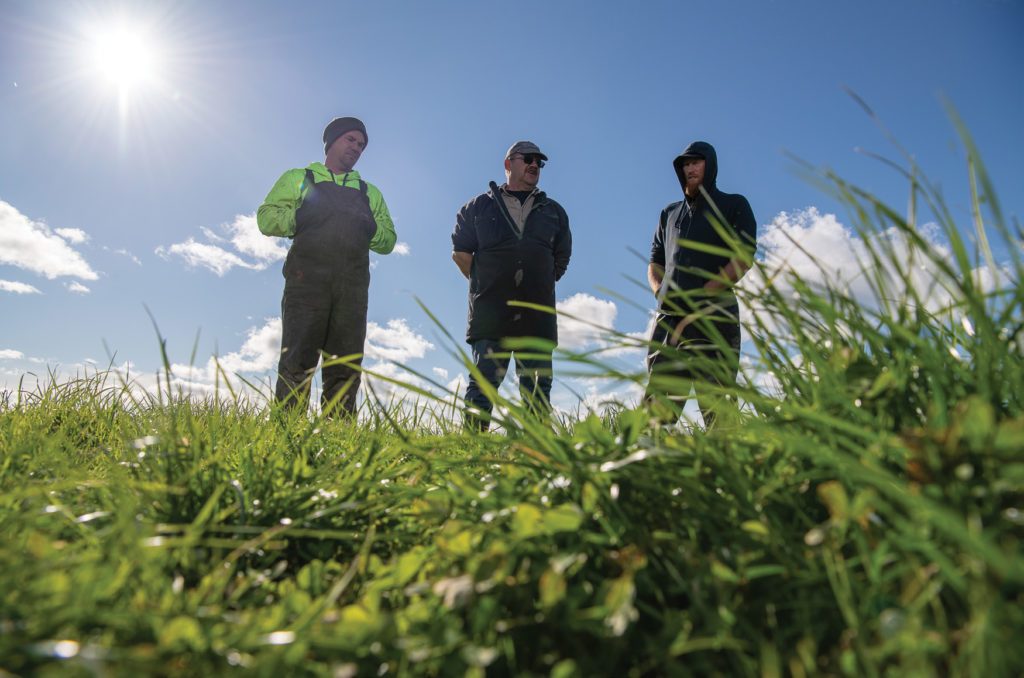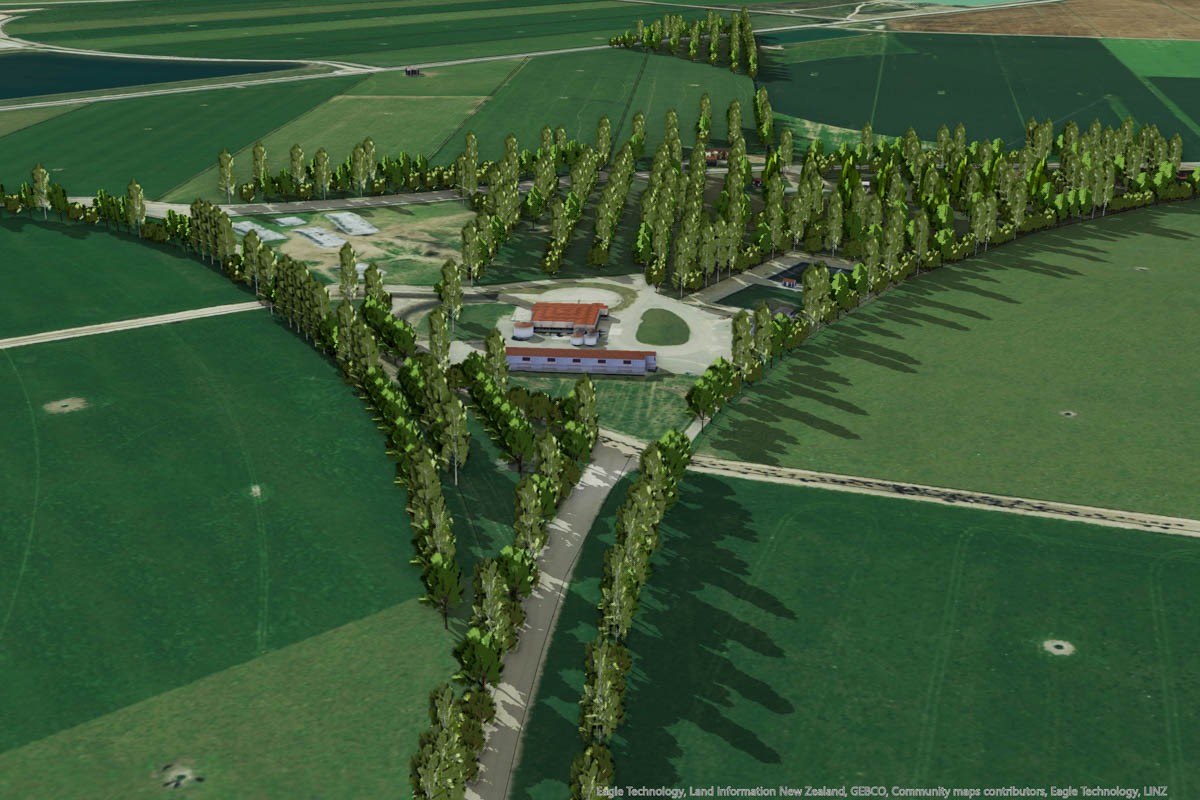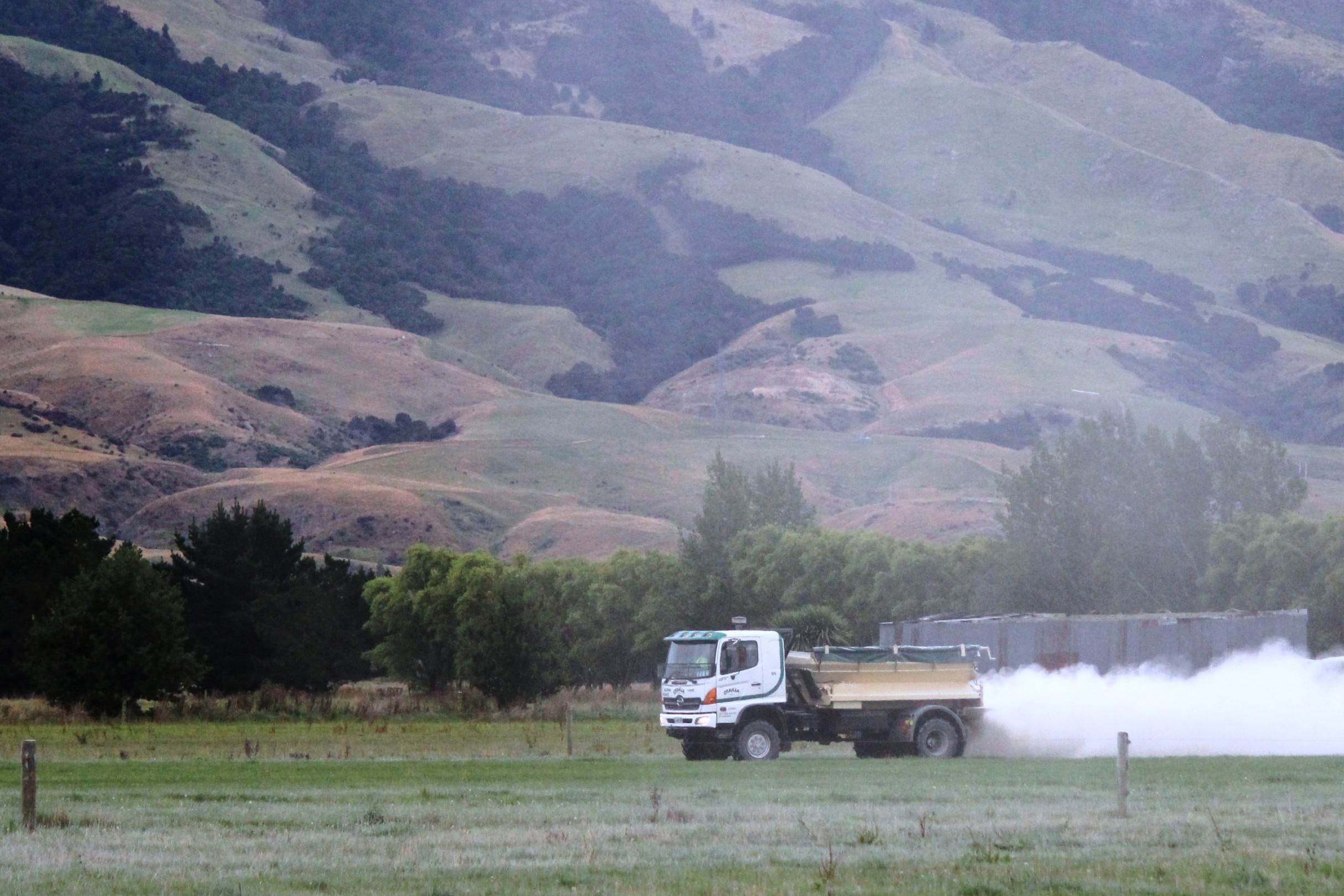Hopkins Farming Group, the owners of Torunui farm near Palmerston North, have a strategy to reduce emissions while making a profit. Jackie Harrigan reports. Photos by Brad Hanson.
Torunui farm is a high performing dairy farm in the Opiki Basin, but farming at 1 metre below sea level is not without its challenges.

Faced with the changes to nitrogen application rules and the coming targets to reduce Greenhouse Gases (GHG) by 10% by 2030, Torunui farm owners Hopkins Farming Group have set out to find practices that will reduce emissions and maintain profit.
As a Partner Farm in the Dairy NZ Stepchange programme, a field day was held in June to review the farm performance and run through possible strategies for change.
The farm runs a highly-stocked pasture predominant system where imported feed accounts for 25% of total intake in the form of winter grazing off (600kg DM/cow) and as maize and palm kernel (675kg DM/cow). No crops are grown on the farm and a small amount of plantain has been added to pasture renewal mixes. Nitrogen application is currently 280kgN.ha.
When benchmarked against other lower North Island farms on DairyBase the farm is above average for dairy operating profit but also above average for methane emissions. (Figure 1).
When considering operating profit vs. purchased N surplus the purchased N surplus for the 20187/19 season is high at 220kgN/ha/yr. Purchased N surplus is a measure efficiency of N use, identifying the difference between N inputs (N in fertiliser and supplements = purchased N) and N outputs in products (milk, meat, crops) and is related to the risk of loss to the environment.
Torunui farm is located within the Horizons regional council, but is not in a priority catchment under the One Plan. Current N loss has been modelled using Overseer at 22kgN/ha which is well below the limit set for priority catchments. Under the peaty soils is a hardpan of clay that the drainage water does not permeate and so the N is more likely to literally go sideways.
SOIL TYPE, WATER THE BIGGEST CHALLENGES
Farm manager Riaan Lamprecht says the soil type and water are the biggest challenge on the farm. In a wet spring and winter the pasture gets wet due to the high water table on the peaty soils and the cows have a 20-25 day later balance date due to the wet.
“We can’t cut silage in the spring because it is too wet.”
“Water literally comes out of the ground, and we have an extensive drainage system to cope, along with a water table and soil water monitoring system.”
The peaty soils dry out in the summer so that they resemble marbles, he says , and on the other hand the silts get very friable.
The ryegrass struggles after a dry summer and gets ripped out by the cows but the irrigation helps prolong its life.
“The 150ha of irrigated area is also shut down early in the autumn to go into the winter with drier soils, which sacrifices grass growth,” Riaan says.
Drainage water from the property is drained to a pump station and pumped over the bank into the Tokomaru river, as long as the river is not too high.
Effluent is irrigated over 90ha, roughly half of the farm, but the irrigation is high risk and is monitored by GPS and shuts down if there are any issues.
NITROGEN USE HIGH
Nitrogen use has been high to grow an offering of 15.9t/ha pasture – with a small application after each grazing, but the 280kgN/ha has generated a purchased N surplus of 216kg N/ha.
To transition down to the new level of below 190kg N/ha the team at Hopkins Farming Group plan to replace some of the N with gibberellic acid (a naturally occurring hormone or growth-regulating chemical that is found to varying degrees in all parts of plants and stimulates both cell division and elongation.)
Nitrogen application will be cut from the effluent areas (which has been increased from 25ha to 90ha) and no N will be applied if effluent has been applied in the preceding 45 days, otherwise the area will have one application at the start of spring.
Riaan plans to GPS the effluent spreading area to better account for the nutrients and make more effective use of the stand-off area to reduce pasture damage when the soils are wet.
The team have come up with two scenarios – the first will see N reduced to 190kgN/ha and three ProGibb applications, one in spring and two in autumn.
This strategy represents a 90kg N/ha reduction of nitrogen. Research shows the ProGibb will deliver 300kg DM/ha additional per application of ProGibb (x3) which will cover the 900kg DM/ha anticipated shortfall in pasture with 90kgN/ha drop, at an average response rate of 10kg DM:1kg N applied.
The second scenario sees a similar reduction in N applied (-90kgN/ha) but just one application of ProGibb in the spring and the remaining shortfall in pasture made up with an added 80t DM maize silage.(See Table 2.)
N leaching drops to 17kg N/ha/yr and profit is similar but Purchased N surplus reduces to 136 or 141kgN/ha and while NO2 reduces, methane remains the same, so total GHG CO2 equivalent only drops very slightly. (see Table 3.)
All of the Hopkins Farming Group dairy farms (seven farms in the Manawatu) are transitioning to reducing nitrogen fertiliser and beginning ProGibb once in autumn and twice in the spring, as a trial.
“We will apply less nitrogen and in smaller amounts and add in the ProGibb between day one and day five post grazing,” said farm supervisor Ian Sinclair- Black.
“Using a smaller amount of N plus Pro- Gibb in the peak growing phase will mean we can make the increased forage into silage and reuse it from the silage stack when we get short of grass.”
“We have used ProGibb in autumn 2021 and were pleased with the very good response rate, so we developed a plan to try it in the spring as well.”
SPREADING THE FORAGES
Growing more white clover is an important component of the pasture, using a mix of large and mid-sized leaf clovers and while the team have not thought that chicory is necessary due to the ability to grow grass under the irrigation, some plantain has been added into the pasture mix to help limit N loss.
“We have been sowing plantain for the past 5-6 years for environmental reasons but there is an issue with maintaining it within the pasture,” Riaan said.
The target is to have 20% of plantain in the pasture and up until now it has been oversown onto the pasture, but Riaan is now looking to put it into the seed mix.
Outside of the pivot irrigation area a short rotation ryegrass has been sown to give pasture growth a boost.
Between 10 and 15% of the farm is regrassed each year as pastures have been damaged in the wet or need renewal.
MEETING N CONSTRAINTS: AT HOPKINS FARMING GROUP
- Lower all rates of N
- Apply N with gibberellic acid
- Less summer application
- Use when less leaching potential
- Use when there is a better response.
Goals under the partner farm project
• Reduce the farm’s footprint (water quality and GHG) and maintain farm profit
• Allow other farmers to follow the journey of this farm as it implements changes to reduce its environmental footprint.
Opportunities for Toronui
Short term:
- Replace applied N with gibberellic acid
- More effective N application (best bang for buck)
- GPS effluent spreading
- More effective use of stand-off area to reduce pasture damage
Medium Term:
- Improved drainage
- More pasture renewal
- Plantain in pasture mix
- N protect
Longer Term:
- Improved cow quality
- Optimise stocking rate and per cow performance (450kg MS/cow)





